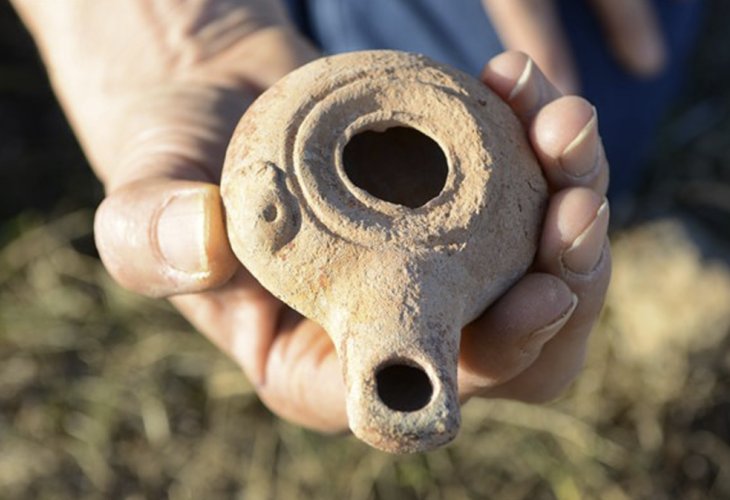A 7-Year-Old Uncovers Ancient Lamp from Maccabean Times
A complete clay oil lamp was found in the Beit She'an Valley by a family on a walk, later given to the Israel Antiquities Authority.
 The 2,200-year-old clay lamp (Photo: Israel Antiquities Authority)
The 2,200-year-old clay lamp (Photo: Israel Antiquities Authority)Last week, a 7-year-old named Hadass made an exciting discovery: an oil lamp from the time of Judah the Maccabee, during a walk with her mother.
Hadass Goldberg Kedar and her mother Ayelet were exploring one of the hills near Kibbutz Nir David in the Beit She'an Valley when they stumbled upon a complete pottery piece at the entrance of a porcupine burrow.
Hadass was thrilled by the find, and her mother, an archaeology student at Haifa University, explained that it was an ancient oil lamp.
Ayelet quickly contacted Nir Distelfeld, Inspector in the Antiquities Robbery Prevention Unit of the Israel Antiquities Authority. "Our unit focuses on preventing illegal activities by antiquities robbers across the country," said Distelfeld. "In this case, innocent porcupines, digging their winter burrows, were responsible for uncovering the intact lamp," he explained.
"Porcupines enjoy archaeological sites because the soil is more aerated due to past human activity," Distelfeld added, noting that "the Goldberg-Kedar family will receive a certificate of appreciation for good citizenship—thanks for reporting the find, and for donating the lamp to the state treasury."
The lamp is characteristic of the Hellenistic period, when the Maccabees fought the Greeks. During that time (early 2nd century BCE), clay lamps started being produced using molds: the upper and lower parts were made separately and then joined. This new technique allowed for mass production and the addition of various decorations. The technological change can be attributed to innovation influenced by the West. In later periods, menorah decorations and other Jewish symbols were sometimes added to the lamps.
It's interesting to note that at the same place, a Greek inscription was found, representing official correspondence between Antiochus III, the first ruler from the Seleucid dynasty, and the regional Seleucid governor. This inscription, discovered in 1960, also serves as evidence of Greek rule in the Holy Land.
Dr. Einat Ambar-Armon, the Education and Community Coordinator for the Northern Region of the Israel Antiquities Authority and an expert in clay lamps, explained that "Antiochus III, mentioned in the inscription, was favorable towards the Jews, unlike his son Antiochus Epiphanes, known also as 'Antiochus the Wicked'. During the time of Antiochus Epiphanes, unprecedented decrees and persecutions against the Jews led to the Maccabean Revolt against the Greeks in 167 BCE." The Maccabean Revolt and their miraculous victory over the Greeks is the miracle commemorated at this time each year.

